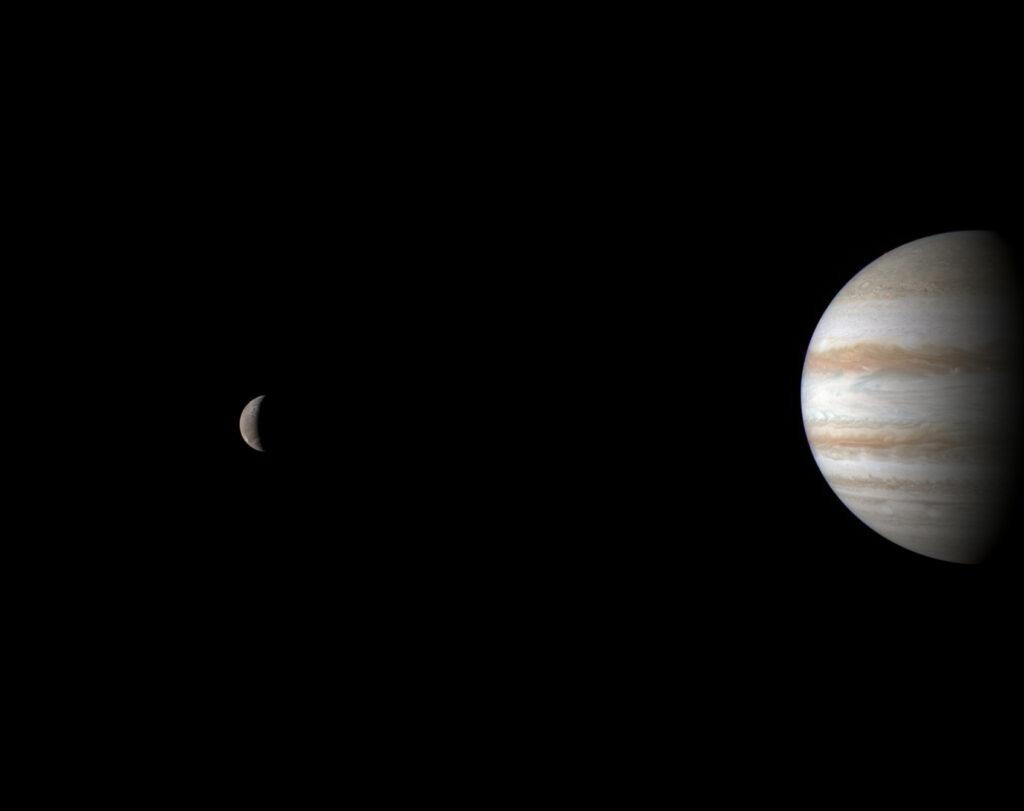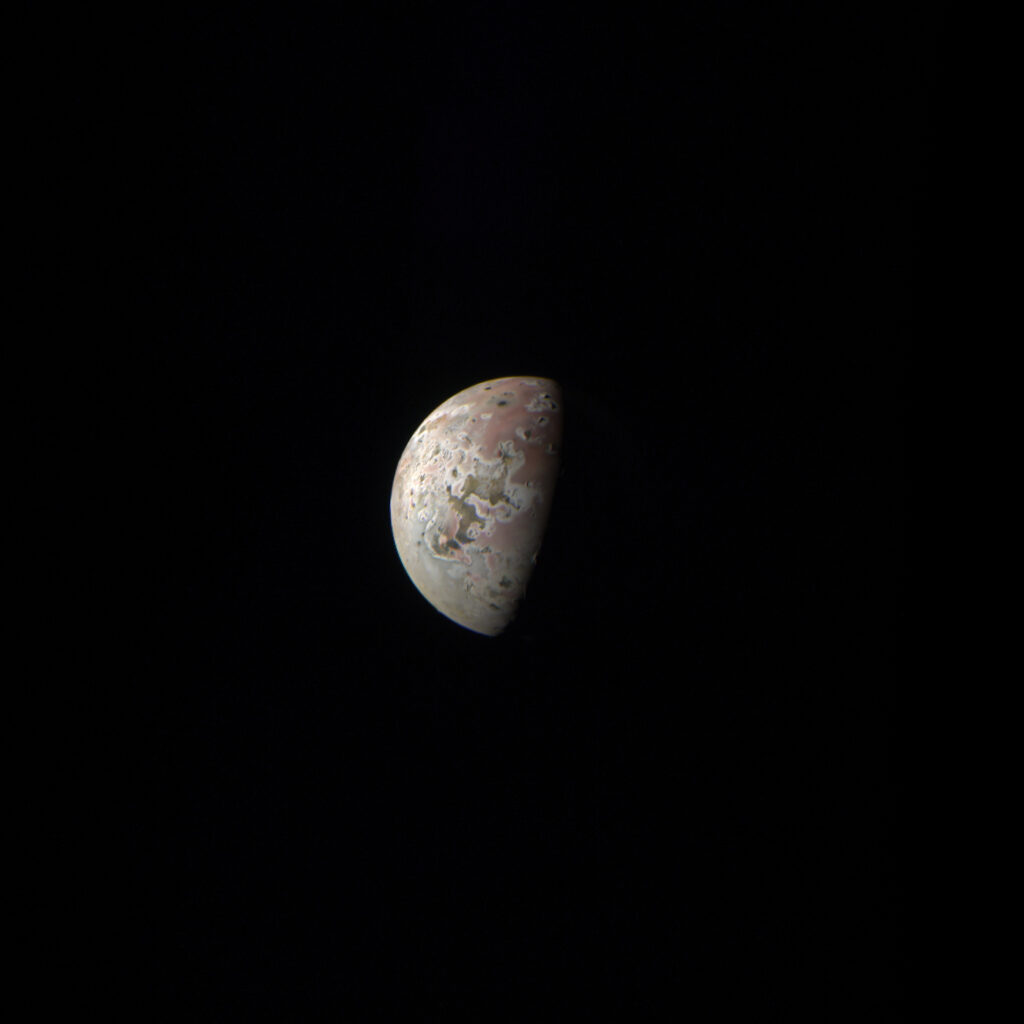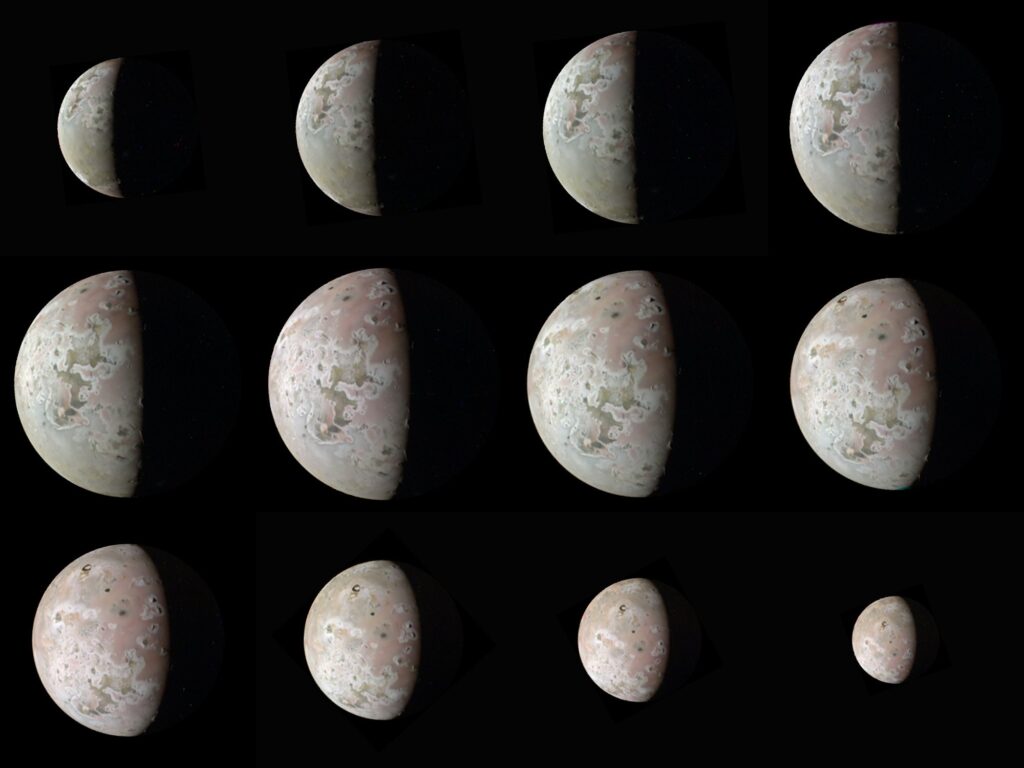The Juno spacecraft transmitted images taken during the Io flyby to Earth. They demonstrate the surface of this volcanic moon.

The rendezvous with Io took place on July 31. Juno flew at a distance of 22 thousand km from its surface. Of course, the mission specialists used this opportunity to photograph the moon. To do this, the “people’s” JunoCam camera installed on board the Juno was used. It got its nickname due to the fact that initially NASA was not going to equip the probe with any camera at all, but later still gave in under public pressure. Thanks to this, we can now see Jupiter’s moons in close-up.
JunoCam images demonstrate how much Io differs from other moons. There are practically no impact craters on its surface, while it has a unique color. On Io, you can find shades of white, red, black, green and yellow. Such a motley color scheme, because of which the moon is sometimes compared to pizza, is explained by the consequences of constant eruptions. Volcanic eruptions covered Io’s surface with numerous sulfur compounds and silicates.

The incessant eruptions also explain why there are practically no craters on Io. Their traces quickly disappear under a layer of volcanic deposits. Instead of impact formations, viscous lava flows can be found on the surface of Io, which can be measured in hundreds of kilometers, lakes of molten sulfur, as well as calderas, the depth of which reaches several kilometers.

Another interesting touch associated with Io is that its orbit lies inside one of the radiation belts of Jupiter. If some researcher had ventured to land on the moon, he would have received a lethal dose of radiation in just 4 hours.
Recall that in December of this year Juno will get closer to Io again. This time the spacecraft will fly at an altitude of only a few hundred kilometers from its surface, which will allow scientists to collect additional data about this unique world and take even more spectacular pictures.
Follow us on Twitter to get the most interesting space news in time
https://twitter.com/ust_magazine
